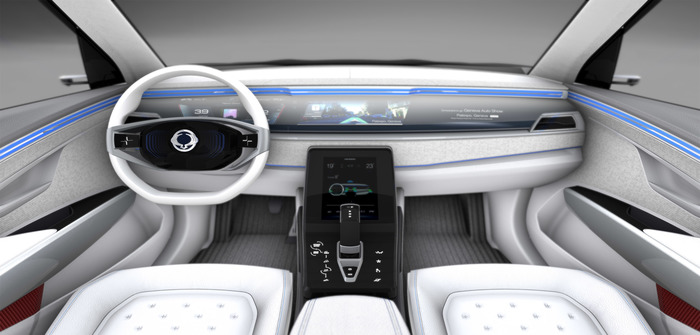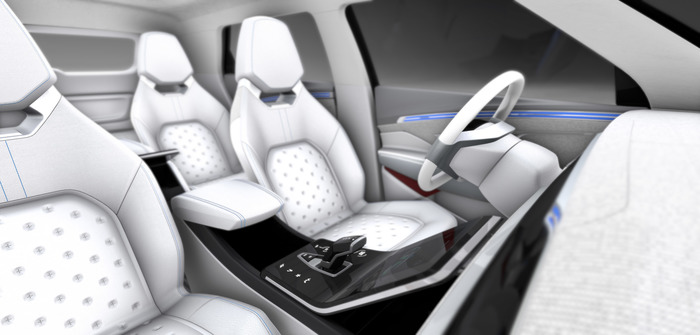A new concept EV from SsangYong makes clear its direction in terms of electrification, autonomous driving and connectivity.
The e-SIV, which stands for Electronic Smart Interface Vehicle, will be central in helping to shape the next-generation of SsangYong SUVs and EVs. It is based on the design of SsangYong’s next-generation C-segment SUV.

The interior features four bucket seats, a wide information display on the main console, and a second-row centre console for sharing information with rear-seat passengers.
The SsangYong aspiration has been to build a car with a smart interface that fuses perfectly with the very latest technology to become a mobile communication space. It would feature machine-learning-based voice recognition, internet connectivity and autonomous navigation.
The autonomous driving technology uses a radar and camera sensor system. This Stage 2 self-driving technology recognises the lane the car is travelling in, and can maintain a safe distance between it and other vehicles on the road. This can be enhanced with an additional sensor to increase the automatic lane and active driving function to achieve self-driving Stage 3.
The connected car function has three major parts. Firstly, it can charge the car’s battery remotely by monitoring the charging progress through a smartphone app based on LTE communication. In addition, it manages charging station information in real time, predicts the driving range based on the amount of charge in the battery, and selects the optimal driving route accordingly.
Secondly, the telematics service enables a number of functions to be controlled remotely. These include turning the power on and off, air-conditioning, car diagnostics and vehicle management, emergency driving in case of an incident, and even driver safety support.
The third element is an infotainment service. Personalisation can be achieved through machine-learning speech recognition. The service works through partnerships to manage music, radio and inter-connected home control.


